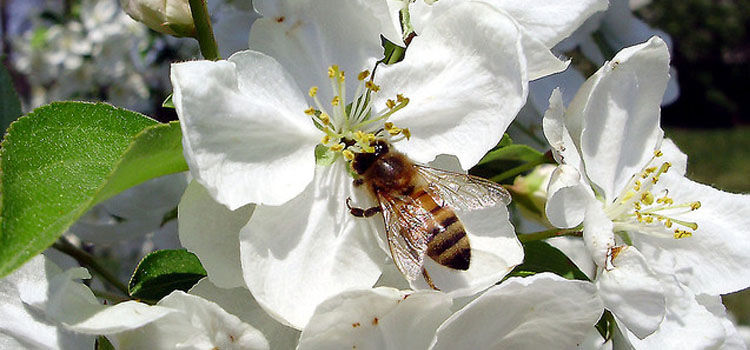This post may contain affiliate links. Full disclosure can be found here.
A few weeks ago, some of our good friends were planting apple trees and were asking me the basics you need to know for planting apple trees. In responding to their questions, I realized it’s not quite as simple as it seems. The act of planting apple trees is not complicated. But if you want apples in years to come there are some important things you need to know before the tree goes in the ground.
I’m going to cover several points.
-
Selecting a variety that works for your area and how you want to grow. (Organic or Conventional)
-
Where to buy quality trees.
-
Selecting the correct pollinators for your tree.
-
When to plant.
-
Where to plant. (Spacing and Location)

1. Selecting a Variety that Works for your Area and How You Want to Grow (Organic or Conventional).
My number one tip for finding what varieties work well for you is to check the website of the Cooperative Extension for your State. They usually will have done research on varieties that are good for your growing area. Sometimes, if your state doesn’t have sufficient information, you can check the Cooperative Extension of a neighboring state. Chances are they will have similar growing conditions to you.
I’m going to link the information for Arkansas’s Cooperative Extension so you can get an idea of what to look for on your local Cooperative Extension. Find it HERE and below is a screenshot.
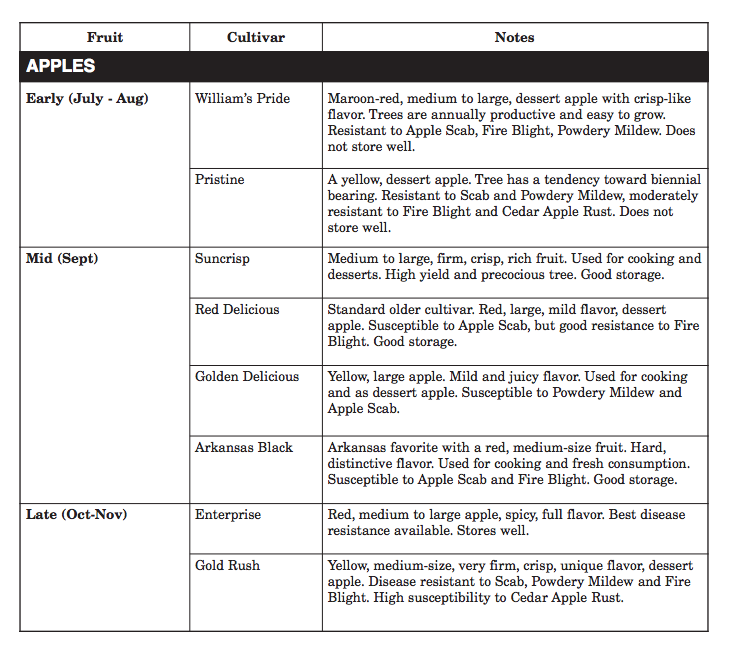 This is what my Recommendations are for Arkansas. Chart By Curt R. Rom and M. Elena Garcia for University of Arkansas COoperative Extension.
This is what my Recommendations are for Arkansas. Chart By Curt R. Rom and M. Elena Garcia for University of Arkansas COoperative Extension.
All varieties of apples have are either susceptible or resistant to certain prominent apple diseases. If you are growing conventionally and planning on spraying fungicide against diseases, you may not need the most disease resistant varieties.
If you are planning on growing organically, select a variety that is disease resistant first and foremost. A little bit of prevention goes a long way.*
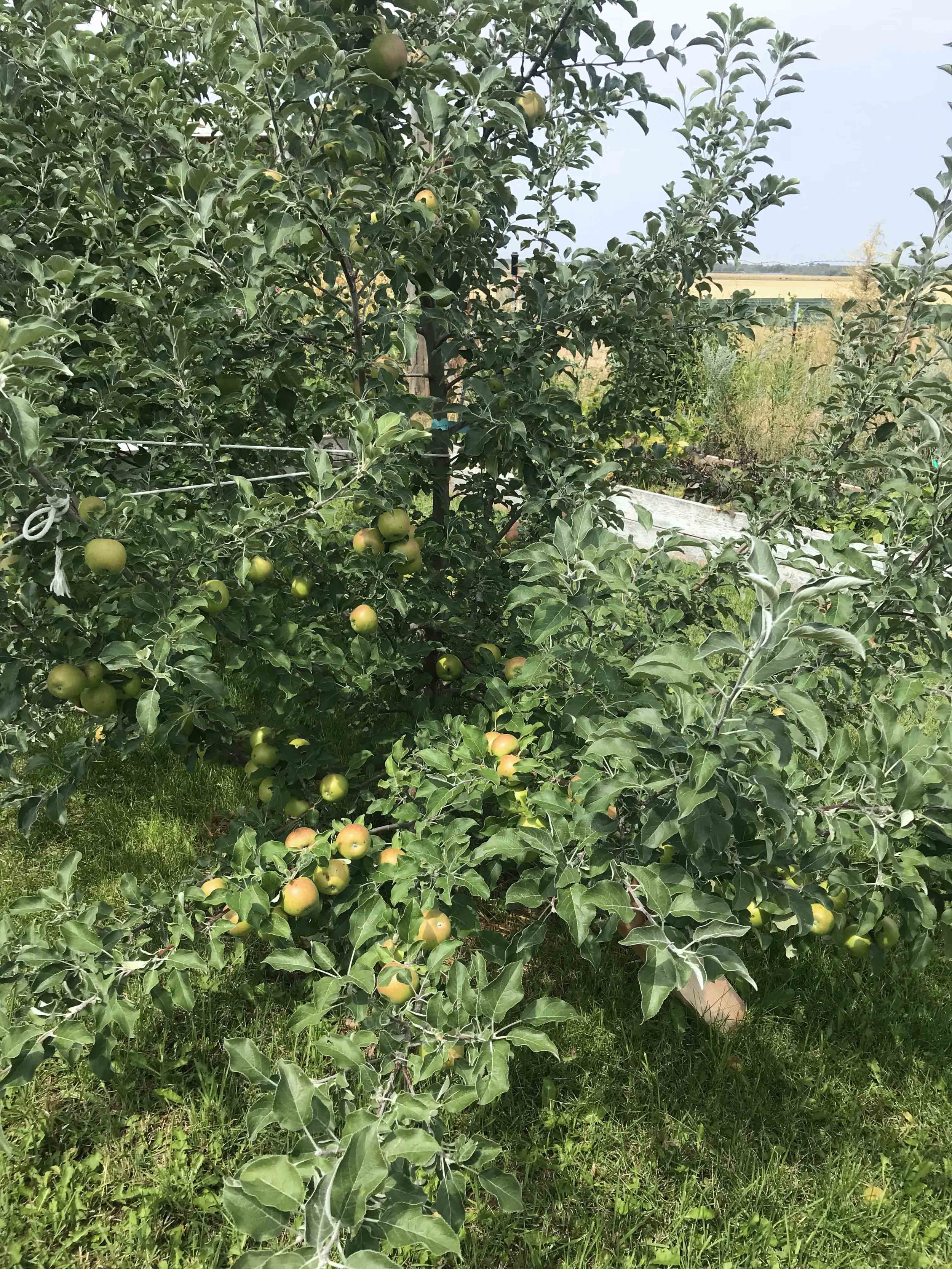 This is my Mother in law’s APple Tree in Idaho!
This is my Mother in law’s APple Tree in Idaho!
* A little note here: my Mother in Law who lives in Idaho, doesn’t spray her trees and her trees are producing great. She does NOT have disease resistant varieties but the dry climate of Idaho makes it so she has no disease problems! If you live in humid, wet climate (most states east of the Rockies and Coastal areas in the West), I highly recommend more disease resistant varieties for organic growing.
Apple Diseases to Look out For:
-
Apple Scab- this is one of the most destructive of the apple diseases.
-
Fire Blight
-
Cedar Apple Rust
-
Powdery Mildew
Another important tip for deciding what apple trees will work for your area is to consider your planting zone. Different varieties work well with different zones. In both of my recommended online places to buy apple trees, you will find information about what zones work for specific apple tree varieties.
2. Where to Buy Quality Trees
The only tree company that I have personal experience with is Stark Bros. I have been very happy with the quality of their trees. I also have experience with Stark Bros customer service and can report it is fantastic.
Another great place is Grow Organic. I haven’t bought apple trees here but I’ve been happy with all their other products and plants. This is looks like a great place to buy organic trees for an affordable price.
I don’t recommend going to a big box store to buy apple trees. In my experience they usually sell trees that don’t work well for your area, are potted and already leafed out, and need major pruning. If you buy trees online they will send you a whip. Which basically looks like a stick with roots. You want this so that you can be in charge of how your tree is pruned.
3. Selecting The Correct Pollinators for Your Apple Tree
If you want fruit, it is important for your apple tree to have proper pollination. Apple trees varieties can bloom at different times in the season. They are normally separated into three categories, early, mid, and late season. Here is what is important to remember: Early season apple trees will not cross pollinate with late season apple trees, resulting in no apples. The lack of pollination between early season and late season apples happens because early season apples have finished blooming by the time late season apples begin their bloom.
For the highest chance of pollination plant at least two varieties which bloom in the same season. For example: Enterprise and Gold Rush both bloom and ripen late in the season. Hence they are great pollinators for each other.
A good option, though not the best as stated above, is to plant early and mid season apple tree varieties together. Or plant Mid and late season together to pollinate one another.
When in doubt, plant a white blossomed crab apple tree to pollinate. Crab apple trees are what is usually used in commercial orchards to cross pollinate. Crab apples are known to have a very strong pollen. I personally planted a Whitney Crab Apple Tree.
Trees need to be within 50 feet of one another to cross pollinate.
Pollinator charts can be very helpful in finding out which varieties work together. Adams County Nursery has an in depth pollinator chart found HERE. I also made my own, which may be a bit easier to read.
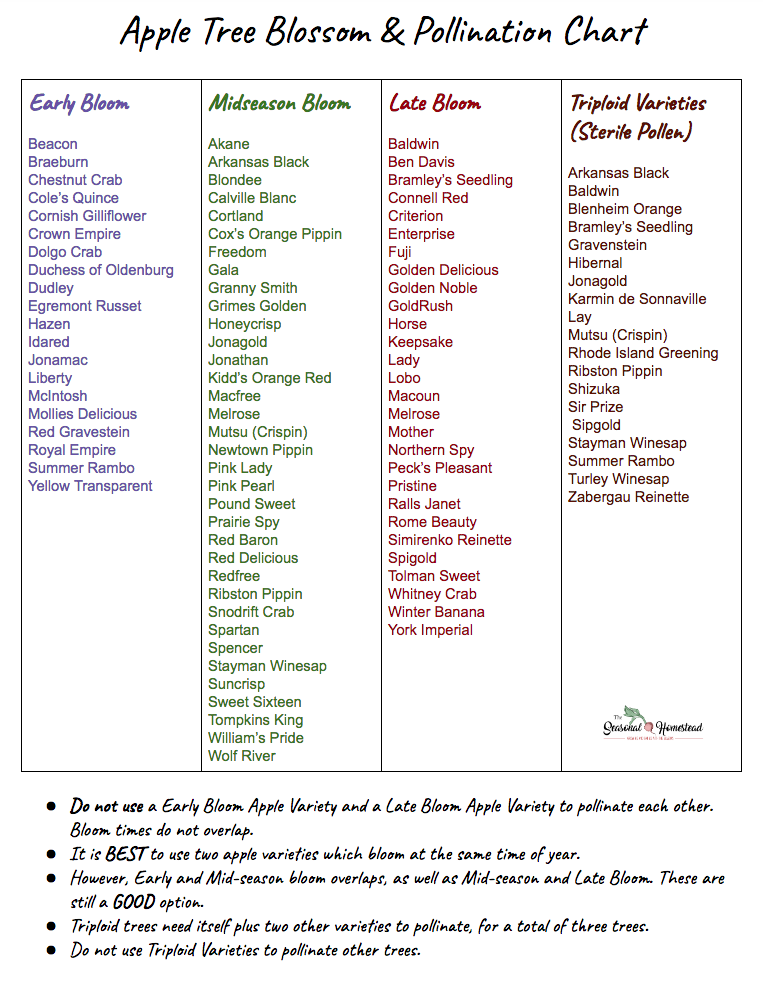
Another thing to consider is that Triploid Apple Varieties have sterile pollen. Consequently it needs two trees other than itself to pollenate properly. Hence the name triploid, it needs three compatible trees for pollination to occur. For example, I have Arkansas Black which is a Triploid apple variety. The other two apple tree varieties I planted with it are Enterprise and Whitney Crab Apple.
4. When to Plant
Tree shopping online means trees are shipped bare root (no soil) and dormant. Even if you aren’t shopping online, it is best to buy a dormant tree. The tree will be able to settle in faster and have less transplant shock.
If you tree is in dormancy, the best time to plant is late winter or as soon as the soil can be worked. I planted my dormant apple trees about 8 weeks prior to our average last frost. In most locations your tree should be in the ground by April 1st. I planted mine the first week of March for zone 6b.
 Second Year Dormant Apple Trees in my own garden after a heavy Pruning
Second Year Dormant Apple Trees in my own garden after a heavy Pruning
If you are planting partially or fully leafed out trees that haven’t been outside already (greenhouse grown), they need to be hardened off just like seedlings. Ease them outside in small increments to begin, adding a little time each day until fully used to the outdoors. Even bare root trees can sometimes be shipped already breaking dormancy. Plant them in a pot and keep roots moist while you harden off the tree. This information does not apply to fully dormant trees.
5. Where to Plant (Location and Spacing)
Location
As with the majority of fruit bearing plants, apple trees need full sun to thrive. This means at least 6+ hours of sunlight each day.
Apple trees like good drainage. Do not plant in an area that is prone to standing water.
Do not amend the soil prior to planting. Yes, even though I learned of this rule years ago when I planted my apple trees, I didn’t listen. And now I’m paying for it. Amending the soil seems like a good idea. However, it’s like planting your apple tree roots in a pot. The roots don’t want to travel outside the lush, organic, amended soft soil to the native soil. My trees have needed to be tied down because the roots aren’t deep.
You can add amendments like compost and ramial wood chips on top of the soil later. Most apple tree feeder roots are near the surface of the soil.
Spacing
-
Dwarf: 8 to 10 feet apart
-
Semi-Dwarf: 12 to 15 feet apart
-
Standard: 18 to 20 feet apart
-
Columnar: 2 to 3 feet apart
It is very important to think about the full grown size of the tree before you plant it. Semi-Dwarf Trees will be up to fifteen feet wide and tall.
Root systems often spread as wide as the canopy of the tree. A fifteen foot wide tree at maturity will usually be supported by fifteen foot wide roots.
Don’t plant near underground utilities, pipes, septic systems etc.
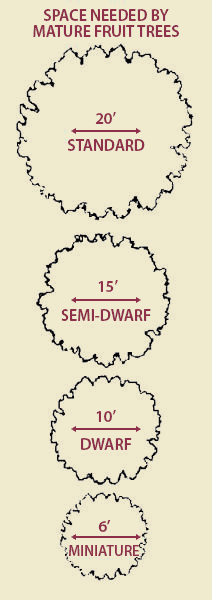 image from Stark Bro’s
image from Stark Bro’s
Conclusion
Selecting a variety that works for your area, knowing where to buy quality trees, selecting the correct pollinators for your tree, planting at the right time and location are all crucial to a great apple harvest.
Apple trees take many years to grow before a harvest. Therefore, you want to get your planting right the first time. The information provided on what to know before you plant will help you grow apples effectively and harvest in fewer years!
Resources


